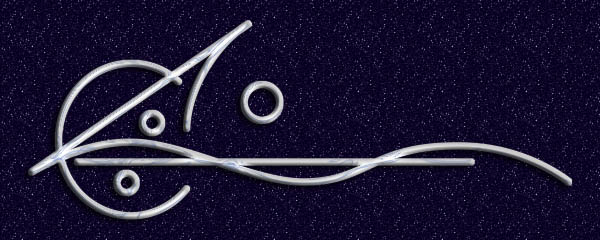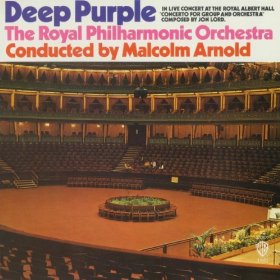I said I’d do a longer piece on Jon Lord, so.
In the aftermath of his death, I bought a couple of old Deep Purple cds I never had. By old I mean from the Sixties. The Book of Taliesyn, Shades of Deep Purple, Deep Purple. These three albums, the band’s first, were recorded with what is known as the Mark I line-up, which did not include Ian Gillan, who became the most recognizable voice of the band in the Seventies, during their most successful period.
What is fascinating now, in retrospect, is just how much a shift they made after they fired Rod Evans (vocals) and Nick Simper (bass).* The original Deep Purple was very much headed in the direction of what we now call Prog Rock. Not just in the wild sound effects they employed, but in the really intricate song-writing. The whole aesthetic approach of this early manifestation of the band embraced the novelty and innovation that defined bands like The Nice, Jefferson Airplane, Yes, and early Genesis. The break when they reorganized around Ian Gillan’s greater range and angrier delivery and Roger Glover’s far more fluid and, yes, heavier bass work is striking, not only for the differences manifest between songs like The Shield or Hush and the next-period thunder of Speed King, Hard Lovin’ Man, or Fireball, but also because of the album that came between the last Mark I Purple and In Rock—namely, Concerto for Group and Orchestra.
This album goes directly to what I consider the most significant aspect of Deep Purple, namely the incredible musicianship of Jon Lord. This is a Lord composition and it is a mature, fully-realized bit of what we call Classical Music (given that we tend these days to lump all the various schools of such music into that one bin—Baroque, Rococco, Classical, Romantic, NeoClassical, etc) that also incorporated rock motifs, elevating what at the time was still, despite the work being done by many gifted writers and performers to raise its stature, regarded as “kid’s music” or, more generally, “pop” or, less kindly, trash. Going back to the the first three Purple albums, you can hear the forerunners here and there throughout in the experimental elements and classically-tinged keyboard work of Mr. Lord. It is historically an astonishing piece of work, rendered even more so by the fact that after that, the new line-up of Deep Purple dove head-first in the hardest of hard rock, the music pitched at a roar and scream.
And yet, here and there throughout the next four albums—In Rock, Fireball, Machine Head, Who Do We Think We Are?—we hear that same sensibility flavoring the stew. Lord’s solos, while full-blown blues-idiom statements, would shift into energetic renderings of Bach, Vivaldi, Rachmaninoff, inserting passages of refined musicianship that fit in with, augmented, and yet stood apart from the thunder and shouts around them.
As good a set of musicians as Deep Purple comprised, it was the sensibilities of Jon Lord, I think, that made them stand out.
(I have to admit here that I never really loved Ritchie Blackmore’s guitar work. It’s fine for what it is and I’ve changed my mind about his actual abilities, especially after listening to the Taliesyn album. He could keep up with Lord, truly. I just didn’t care for his approach. But it was another distinctive voice within the Purple mix. I confess that both Tommy Bolin and present-day Steve Morse play more to my liking (especially Morse, whose work with the Dixie Dregs and later with Kansas established him as one of the best in the business), but there is also no arguing that Blackmore’s style is almost instantly recognizable. But I listened more in spite of him than because of him.)
Deep Purple became a bit of a cliche by the end of the Seventies. Smoke On The Water was so overplayed as to become its own parody. But despite periods of never listening to them, I always return, drawn to the power, yes, but always to those keyboard runs and the above-average musicality, which I identify with Lord’s continual influence.
What brought me finally to the realization that this was one of the finest composers on the planet was the series of albums he did all of his more or less straight classical compositions, starting with The Gemini Suite, which in many ways was a second try at the Concerto. The format is the same (modeled on, I believe, Bartok’s Concerto For Orchestra) but the music is all new. Lord did a number of these and after his retirement from Deep Purple in 2001 or so he devoted all his time to composition and recording his symphonic music. In albums such as Boom of the Tingling Strings, Durham Concerto and others, he has left us a set of musical experiences quite apart from the driving rock he also did with great ability and obvious passion. (He said of his later works that he composed music, not labels.)
Jon Lord was only 71 when he passed away, from complications of pancreatic cancer. His voice still speaks and I would urge everyone with any serious interest in music to go find his later recordings and be amazed.
As much as I love his classical works, though, I think this is how I will always remember him.
___________________________________________________________________
* Rod Evans, in these early recordings, displayed a common approach among a certain kind of rock’n’roll vocalist that was a sort of homage to Elvis. His exaggerated stylings can come across almost laughable in certain instances, but he was a credible singer within a certain range. He later became a founding member of Captain Beyond in league with a couple of Iron Butterfly alumni where his vocals leveled out and he displayed his qualities to much better and more honest effect. With the collapse of that band, Evans soon retired from music.
Nick Simper fared less well, though he worked more steadily, in and out of a variety of bands that never quite “made it.” The longest run after Deep Purple was a band called Fandango. Simper still gigs, though.


Thanks, Mark. This was a delight, both your descriptions and the videos.